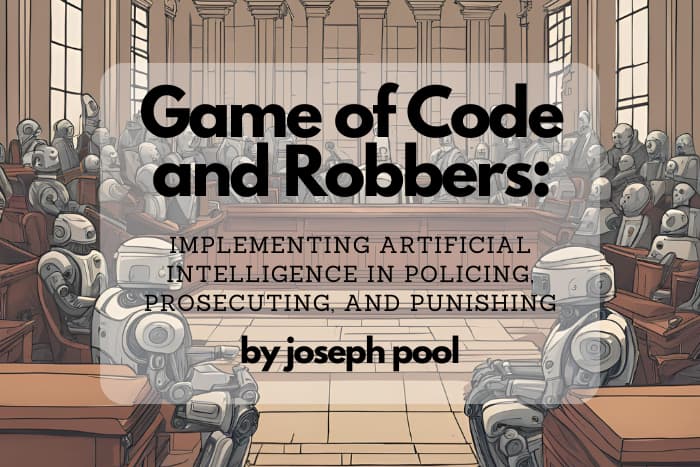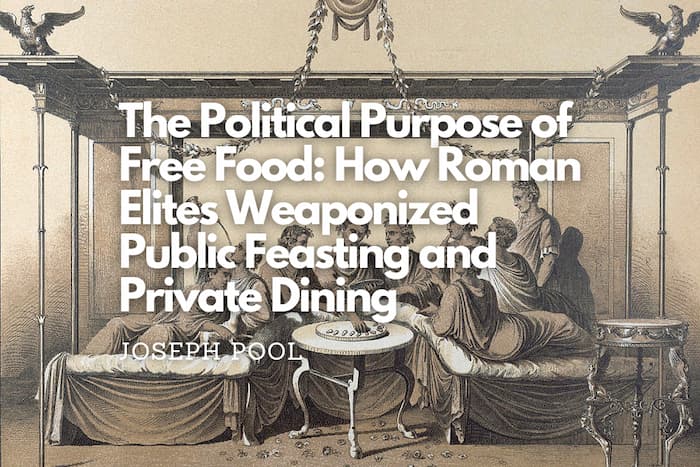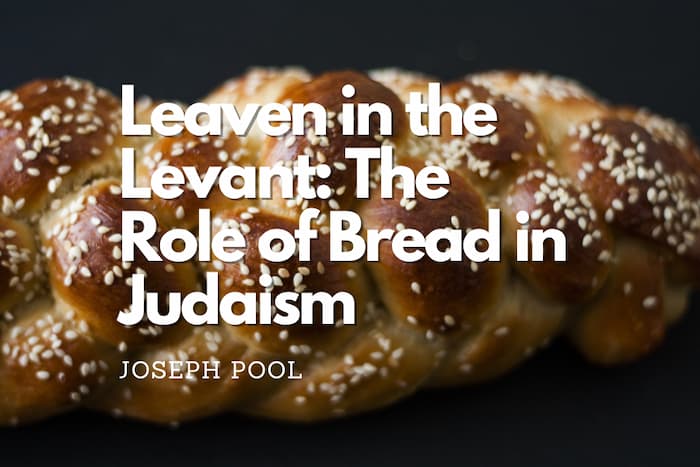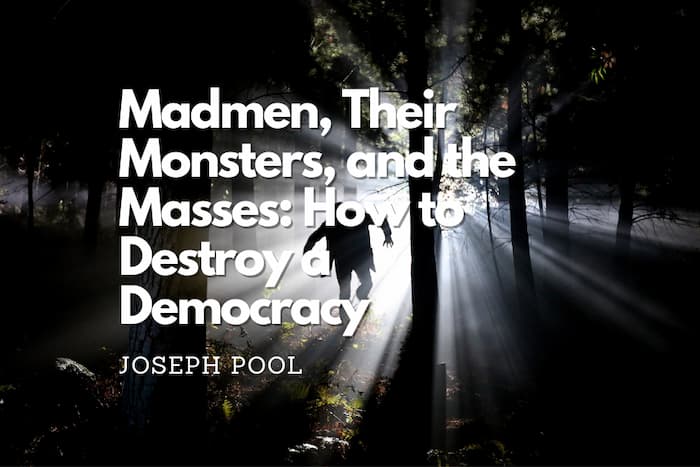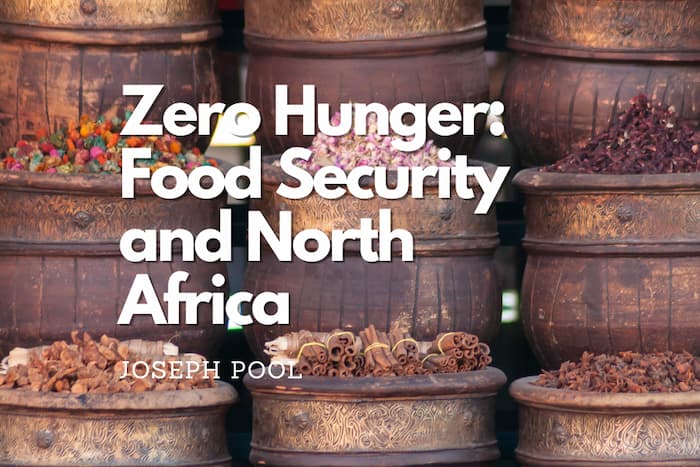by Joseph D. Pool
Introduction
What do Blackbeard, Henry Morgan, and Johnny Depp’s Captain Jack Sparrow have in common? They all needed food to live, and that food likely had to be grown. For thousands of years, everything from the clothes we wore, to the medicine we took, to the food we ate was largely a product of the natural resources around us. Plants have historically provided for the majority of humans’ daily nutrition needs; even today nearly 60% of the calories people consume are from wheat, rice, and corn alone. Some of these crops predate modern humans, yet others were the intentional invention of people selectively breeding or cross-pollinating those with the most desired traits. Through natural and artificial selection alike, tiny stalks of small maize clusters become teeming cobs of corn. Ancient grasses become the wheat and derivative products that people have devoted aisle upon aisle of the grocery store. For thousands of years, food has been an item that any could grow given the right conditions, and that all would benefit from. But if current trends persist, the near constant stream of innovation, expansion, and accessibility improvements to the field of agriculture may be blighted alongside the crops this field yields.
Meanwhile in the waters, pirates have persisted as a pop culture phenomenon and piracy has emerged as a popular focus of research in academia, legal professions, and policy discussions alike. Much like the feared, revered, and inconceivably infamous Jolly Roger flag that heralded dread across the high seas, a new black flag is threatening the livelihood of farmers, producers, consumers, and the state of our agriculture entirely. While not a piece of cloth with a skull and crossbones, these patent filings and subsequent cease and desist letters have the same power to ground any operation and make those on the receiving end tremble in trepidation. Avast ye! Belay! Prepare to be boarded by the corporate corsairs of the modern era—the biopirates—as they file to seize the bountiful booty of nature and hide it deep in their legally-protected hulls.
From Caribbean To Cornfields
In the dictionaries and policies of today, piracy is labeled as a scourge that must be scoured from the high seas and every corner where it is whispered. It is not enough to financially or legally punish pirates, but it is imperative to the functioning of Western liberal democracies and developed countries that these pirates be met with enough social and political firepower that the idea of piracy is no longer. According to Merriam-Webster, piracy is defined as both “an act of robbery on the high seas” or “the unauthorized use of another’s production, invention, or conception especially in infringement of a copyright.” Meanwhile, 18 USC Ch. 81: PIRACY AND PRIVATEERING demands that, “Whoever, on the high seas, commits the crime of piracy as defined by the law of nations, and is afterwards brought into or found in the United States, shall be imprisoned for life.” Association with pirates alone carries years of imprisonment and the harshest of penalties. This “law of nations” is not just incumbent upon American citizens or those acting in American waters, but legally binding and legislatively brutal across nearly all developed nations and most countries of the world.
To understand how we went from Blackbeard to threats against even black beans, it is imperative to understand the long history of piracy, the philosophy that underlies it, and how its meaning was both championed and changed by different groups at different times. There is and always has been a reason people resorted to a life of piracy, and it has not always been as simple as mere gain at others’ expense. In fact, its golden days were underpinned with the belief that piracy was anything but greedy and selfish—that it was ethical and even altruistic at times. In historical perspectives, piracy was hailed and celebrated by some members of society while hated and cursed by others. Depending on the time period and sociopolitical position of the person asked, pirates were both “philosopher kings of the seas” and “villains of all nations,” (Rediker, 2004). Only by analyzing and understanding the complex history of piracy can these vastly disparate definitions and labels be rectified and rationalized.
Roots in Maritime Piracy
In short, piracy began as soon as organized traveling by sea first started. It is a particularly ancient and easily understandable arrangement in which individuals or groups of them would use a combination of brashness, bravery, and weaponry to seize the goods, crew, or control of another ship and put it to use for their own ends (de Souza, 1992, p. 13). As one of the earliest examples of dangerous pirates, ancient writings and artifacts talk about the mysterious “Sea Peoples” who sowed terror and turmoil across Mediterranean coastal towns in ~1200 BCE, pillaging, ransacking, and killing those who got in their way (Moreu, 2003, pp. 107-124). Some historians in fact attribute the relatively abrupt collapse of many Bronze Age societies and cities on the exploits of these Sea Peoples. Discussing the multinational origins of these early maritime marauders, historian and archeologist Dr. Eric Cline hypothesizes that, “the two waves of Sea Peoples that crashed upon the shores of Egypt thirty years apart were composed of a motley crew from many different areas of both the western and eastern Mediterranean plus the Aegean and perhaps Cyprus as well,” (Cline, 2016). People from many places and situations were enamored with the perilous prospect of piracy.
While many modern accounts do not consider these Sea Peoples or similar maritime raiders to be technical pirates as they lacked some of the internal structure and systems as more contemporary pirate organizations, their seizing of ships and bounty set the foundation for every organization from governments to family groups to either fight or flee from their approach. For those traveling alone or in caravans across the oceans and in coastal towns, watchmen were posted, guards were positioned, and foreigners were regarded with caution and suspicion. These early roving bands of violent thieves were a threat to merchants and monarchs alike.
As cities and society itself advanced past the Bronze Age and into the Age of Exploration, so too did the purpose behind piracy. Some people become pirates out of necessity—they simply could not survive without the food or resources they plundered—while others chose the life of high crime on the high seas out of economic incentive and greed. If one could steal a ship and its cargo without losing one’s own life or property, they would have all the more resources to use, trade with, or benefit from. At a time in which life for all the most successful meant living in dire conditions (McCoy, 2016) and dicey political climates (Adams and Pincus, 2017), piracy was seen as a golden ticket out of the troubles of everyday life for the everyday person. It carried risk, but of course it carried the chance of reward.
Many of these pirates initially got their experience and license to pillage as part of a well-regulated job at the behest of rulers. They were known as “privateers” and given full right to raid the ships of enemy nations. But they were still subject to the laws of their sponsor, and had to give up a lot of their earnings to them. According to author and journalist Frank Sherry, “Privateering attracted many of the finest seamen of the age because it was a legally sanctioned activity, fundamentally different from illegal piracy in that pirates preyed on all shipping, while privateers took only enemy ships. Unlike pirates, privateers could be heroic, winning fame and their country’s thanks, as well as high fortune, for their efforts,” (Sherry, 1986, p. 57). While mutually beneficial, it was a relationship that always balanced on a razor’s edge.
According to pirate historian Dr. Marcus Rediker, maritime piracy was borne at least in part out of a response to harsh conditions and treatment aboard trade ships. He writes, “Sailing these small, brittle wooden vessels over the forbidding oceans of the globe, the seaman took part in a profoundly collective work experience, one that required carefully synchronized cooperation with other maritime workers for the sake of survival. Facing a ship captain of almost unlimited disciplinary power and an ever readiness to use the cat-o’-nine-tails, the sailor developed an array of resistances against such concentrated authority that featured desertion, work stoppages, mutinies, and strikes,” (Rediker, 2004, p. 25). These pirates were conscripted seamen-soldiers who had to dutifully follow every command of their captains or risk any manner of punishment. The captain took the lion’s share of provisions and profits, and the seamen were often given little more than scraps for their interminable work on board these vessels.
Naturally, this built resistance and resentment in the crew—feelings that boiled over into the creation of piracy. As Rediker reaffirms, “[Crew culture’s] core values were collectivism, anti-authoritarianism, and egalitarianism … All of these cultural traits flowed from the work experience, and all would influence both the decision to turn pirate and how pirates would conduct themselves thereafter,” (Rediker, 2004, p. 26). When the conditions were exceedingly harsh and the captain was exceedingly heavy-handed, members of the chartered crew would “jump ship” and “go pirate.” They would take the plunge into a perilous life of crime for the chance at a life of freedom and purpose. Whether they began by mutineering their current vessel or acquiring a new one—by means legal or forceful—the pirate crew operated by a radical set of new rules, ones that challenged all conventions of that time, and would not be entirely replicated in civil society for hundreds of years more.
Unlike the strict, standardized structure of naval or merchant vessels owned by a faraway leader and operated by a trained captain with unlimited authority, the pirates operated their ships on a dauntlessly democratic structure. According to popular science author Steven Johnson, pirates began their voyages by setting up articles of agreement, electing a captain from amongst their ranks, and appointing a quartermaster to keep both the captain and crew in check. While wages on royal ships at the time saw captains getting upwards of 10 times a crew member’s share, pirates split any plunder much more cautiously. As Johnson writes, “[Pirate Captain] Henry Every and his men adopted a simpler structure [to other pirate vessels of the time]: two shares for Every, one share for everyone else,” (Johnson, 2021). While feelings of brotherhood and shared pasts of brutal lives provided the philosophical impetus for these democratic, egalitarian bylaws, a pragmatic reason existed too: a greedy pirate captain could be removed from their position or the ship entirely by a vote from the crew.
The result of these norms and private institutions, according to research from UF student Jason Acosta, was remarkable for its time and on par with the American democracy that emerged in the late 1700s. As he explains, “Like the American revolutionaries, pirates developed three branches of government with checks and balances. The ship captain was elected, just as the U.S. president; the pirate assembly was comparable to Congress; and the quartermaster resembled a judge in settling shipmate disputes and preventing the captain from overstepping his authority … All crew members were allowed to vote, ship charters had to be signed by every man on board,” (Acosta, 2006). Many pirates lived by a code of mutual care and compassion for crews elsewhere. According to some accounts, when these “villainous” pirates boarded another vessel, they would offer the crew a chance to join their own and partake in the risk and reward together. Moreover, they would often ask the crew about how their captain treated them, and if they were a fair and respect-worthy captain in the eyes of his crew, the pirates would allow them to keep their lives and loot.
Interestingly, these wretched robbers of the high seas seemed to also act as benevolent protectors of the desolate and downtrodden at sea. Women could be pirate crew or captain, people of all nations and races could be part of the same crew, and the pirates had full say in where they traveled and what they risked in doing so. Compared to the cramped crew quarters, cruel quartermasters, and costly quarrels on royal or merchant ships, the pirate life seemed to be one of excitement and emancipation. The crews of non-pirate vessels heard of these stories, and naturally, the seductive siren song of the pirate lifestyle played across the high seas.
For rulers and ruling class shipowners, the romanticized rise of piracy was a threat against society at large. As Rediker depicts, “poor seamen who turned pirate dramatized concerns of class. Formerly enslaved Africans or African Americans who turned pirate posed questions of race. Women who turned pirate called attention to the conventions of gender,” (Rediker, 2004, p. 6). At a time in which philosophical questions of such nature were confined to aristocratic parlors and parliamentary arguments, the common people taking up arms against the upper class was an existential threat. As such, colonial governors, European rulers, military commanders, and ministerial leaders were galvanized to act against pirates in the most absolute of terms. Spanish and British fleets, while constantly at war with one another, banded together to first attempt to control pirates and eventually to “extirpate them out of the world.”
Due to the tremendous threat they posed to both the wealth of rulers and the overarching power structures of the era, pirates were libeled, and labeled as the most dangerous forces on the Earth. Rediker retells the fact that it was claimed “between 1716 and 1726 pirates captured more vessels and did greater damage to trade than had been done by the combined naval and privateering that Spain and France undertook during the War of Spanish Succession,” (Rediker, 2004, 33). World powers of the time instructed their enforcers to decimate pirates, publicly execute their crew and captains, and deal in the harshest of ways with their own crews who may exhibit sympathy or solidarity. As economist Peter Leeson shares, “pirates had no government. In fact, according to a petition from “the General Officers of the Army” to King George I, pirates were ‘profess’d Enemys of al Order and Government.’ They consequently forswore the civilities afforded the members of legitimate societies who could rely on the state’s apparatus of peace-keeping and order to lubricate the machinery of social cooperation,” (Leeson, 2009, p. 45). One of the most famous people in America at the time, Puritan preacher Cotton Matther, delivered a series of execution sermons to pirates before they were hanged in the public squares of Boston. He taught his congregation that they were reprehensible villains, and that they had sided with the Devil in their dealings. (Chand, 2017). Legislators in both the colonial states of America and back in Europe sought to eradicate the scourge of piracy and either get pirates to publicly repent, or show common citizens the tremendous consequences that will be incurred should one choose the life of piracy. Pamphlets and books were written, sermons and speeches were given, and military vessels cruised alongside merchant ships for the off chance they encountered pirates. With a combined military and PR campaign from the most powerful nations in the world, maritime piracy rapidly declined and maritime pirates’ ranks were decimated, yet its legacy and the fear it instilled in powerful groups remains to this day.
From its onset, maritime piracy was partially a path made out of economic need, and partially a moral stance against oppression, authority, and control. The response to piracy was a further increase of control, a harshening of punishments, but eventual improvements in the workers’ experience. The first worker strike came not from industrial factories of Europe, but on board a vessel that had mistreated its crew. The right to vote for minority races and women was not granted in the United States until 1868 and 1920 respectively, yet pirates held this concept as sacred in even the 1600s. To this day, the President of the United States is not elected by popular vote, but on board the pirate ships, direct elections with one person having one vote was cemented from the start. Maritime piracy was radical in form and function. It led to lost lives and stolen profits. It was a plague haunting the seas and threatening travelers during this time. Yet, it also served as a beacon of hope and change for those who had been dealt a bad hand in life.
Piracy’s Modern Branches
The nations of the Golden Age of Piracy fought for and granted exclusive rights to trade certain goods or use certain routes. A country’s ruler granted a ship a royal decree that allowed them unfettered access to a faraway resource under imperial or colonial control. As such, pirates were not just maritime thieves but also acted in breach of these exclusivity contracts. In a way, their actions resemble those of modern IP pirates who similarly use the tools at their disposal to gain access to resources that are not theirs.
According to the World Intellectual Property Organization, “Intellectual property (IP) refers to creations of the mind, such as inventions; literary and artistic works; designs; and symbols, names and images used in commerce … By striking the right balance between the interests of innovators and the wider public interest, the IP system aims to foster an environment in which creativity and innovation can flourish,” (WIPO, n.d.) As expanded upon by Richard Spinello, “The statutory framework that protects intellectual objects in the USA has its roots in the US Constitution (Art. 1, § 8, cl. 8.) … To a great extent, the inspiration for the laws stipulating this “exclusive right” can be found in the normative frameworks,” (Spinello, 2007, p. 12). John Locke and other philosophers of his era believed that people are entitled to exclusivity over the physical (and later mental) fruits of their labor, and can decide who can access it and how that access would work (Locke, 1980). If one were to put the work in to grow an orange tree, it only makes sense that they decide what is done with the oranges it produces. When one designs a digital orange tree, why should the rules and standards be any different?
Not everyone abides by these laws or acknowledges validity in their explanations. These individuals are modern IP pirates. As defined by attorney referral service Upcounsel, “Intellectual property piracy is when any work is duplicated or used without proper authorization from the original creator.” IP protections were envisioned under common law as a supposed way of 1) incentivizing innovation, and 2) protecting private property from others’ benefit or control. These intellectual properties are granted and governed under a set of evolving US laws. Initially, a work was protected for 7 years after its creation with the chance to renew it for another 7. Due to persistent, successful lobbying efforts, this was doubled in time, then lasted the lifetime of the creator, and now has reached a point in which a work is exclusive and protected for the lifetime of its creator plus an additional 70 years. Proponents argue that the risk and work taken to create and contribute to society deserves compensation, and that a person should benefit from the fruits of their labor. Opponents of current copyright and patent statutes admonish that it negatively impacts the public commons, prevents expansion and innovation, and in the case of protected items like medicine, could entirely risk lives. The fact that not just creations but methods can be protected severely limits innovation and entrepreneurship. As law professor James Boyle remarks, “because the copyright term is now so long … most of twentieth-century culture is still under copyright—copyrighted but unavailable. Much of this, in other words, is lost culture,” (Boyle, 2008, p. 9). This fight against an alleged legal failure has led to protest, prosecution, and above all, piracy.
As maritime piracy was a response to the problem of what was deemed excessive control and absolute authority, intellectual property piracy was similarly founded upon these anti-authoritarian and pro-”common man” principles. Just as maritime piracy wreaked havoc on company and kingdom profits, modern IP piracy leads to staggering amounts of lost revenue in the digital world. According to the US Chamber of Commerce, “Using macroeconomic modeling of digital piracy, the study estimates that global online piracy costs the U.S. economy at least $29.2 billion in lost revenue each year,” (US Chamber of Congress, 2019). These are billions that, per the law and the philosophy underpinning it, rightfully belong to the copyright holders who poured their work into these designs and methods.
It is unsurprising then that pirates have again become the villains of all nations. No longer mainly striking terror across the high seas, they threaten the radio waves and the sail across the silk screens of the movie theaters. Often, they take content that is locked behind a paywall, subscription, or other cost and find a way to distribute it for free or at a reduced price. From the fake Gucci bags that like the streets of New York to the websites that allow people to watch the latest movies for free while they are still playing in theaters. More impactfully perhaps, they have found ways to get regulated medicine to those who need it and costs that do not compare to the exclusive price one would legally need to pay.
Interestingly, some of the harshest fighters against digital and IP piracy were industries founded exactly because of it. As blog Contextisking explains, “during the late 1800s and into the 20th century, [Thomas Edison] held many of the patents over the technologies needed to create movies. [He] apparently used these patents as a cudgel … if you wanted to be in the movie business, you did so at the pleasure of Thomas Edison,” (Contextisking, n.d.). Hollywood was created, both intellectually and geographically, because California was simply too far from New Jersey for Edison to successfully enforce his patent protection against moviemakers. Thus, the industry worth upwards of $800 billion (Hummel, 2023) was founded in Los Angeles.
Decades later and industries such as television, radio, and publishers were on the offensive against the new pirates. These pirates in turn fought back, hijacking airwaves to blast their music, uploading scanned copies of records and books for all to use, and making all manner of parodies and edits of some of the most fiercely protected digital and intellectual properties. This war has continued to rage on, and millions of unsuspecting participants are playing a role, often in favor of the pirates themselves.
As John Gantz and Jack Rochester capture, “The portrait of a church quilt used in the background of a TV series for only 27 seconds was not fair use, while the use of 41 seconds of a boxing film in a biographical movie of Muhammad Ali was. A sculptor using a copyrighted photograph as the basis for his sculpture violated copyright, while Google rendering thumbnail images on its search engine for millions of viewers was considered fair use,” (Gantz and Rochester, 2004, p. 7). For many consumers, the laws are too confusing and costly to navigate, and for others they are simply not worthwhile to understand. As the authors tease, over 60 million people at the time of writing, and millions more in the era of ChatGPT and other website-scraping tools are pirates now.
Intellectual property piracy is rampant enough that most people who use the Internet have in fact breached IP law without realizing it. As humorously told as a day-in-the-life snapshot by law professor John Tehranian, “By the end of the day, John has infringed the copyrights of twenty emails, three legal articles, an architectural rendering, a poem, five photographs, an animated character, a musical composition, a painting, and fifty notes and drawings. All told, he has committed at least eighty-three acts of infringement and faces liability in the amount of $12.45 million (to say nothing of potential criminal charges). There is nothing particularly extraordinary about John’s activities,” (Tehranian, 2011). Clearly, these laws are all encompassing, and confusing enough to navigate or know that even a licensed attorney and professor of law would incur millions in penalties daily if companies chose to prosecute his standard internet usage. Piracy emerged partially as a protest against control, but the issues it poses have been exacerbated by the continued rise in accidental piracy as a result of the byzantine set of regulations and intellectual property protections that govern everything across the internet and modern daily life.
Digital and maritime piracy alike were threats to authority and pushed both the sociopolitical envelope and the concept of repurposing resources forward in discussion. Pirates were and remain champions of the common man—whether a sailor dealing with brutish conditions or a 21st century citizen dealing with exorbitant prices to watch their favorite show or show a movie in class. The pirate outfit has been a preeminent Halloween costume for decades, and pirate films and books have captured audiences from toddlers to technologically-adept economists and legislators. Perhaps riding high on this wave of fame, corporations themselves have become the latest type of pirate, one that takes the name and resources, but itself may pose a threat to the common person. They call themselves the bioprospectors. These corporate corsairs and billionaire buccaneers have taken not to a life of high crimes on the high seas, but highly contentious and costly research and development work. In the words of their detractors, they have become biopirates and they have set sail for farms, grocery stores, and dinner tables.
Budding Field of Biopiracy
Besides plundering, protesting, and philosophizing, pirates have another love: their cherished grub—the food that gives them the energy to get the rest of it done. In historical perspectives, as in the day of digital piracy, this procurement of food is the result of extracting resources from the natural land, perhaps modifying them in some way, whether by cooking or mixing them together, and then ingesting them. Everyone who follows this process is a bioprospector. As ScienceDirect explains, “Bioprospecting is defined as a systematic and organized search for useful products derived from bioresources including plants, microorganisms, animals, etc., that can be developed further for commercialization and overall benefits of the society,” (ScienceDirect, n.d.). A trip to forage for mushrooms, the sauteing of said mushrooms in a stir fry, and the work to chemically extract its psychoactive compound psilocybin to treat certain types of depression are part of this crucial bioprospecting process. For thousands of years, individuals and groups have studied the medicinal, chemical, aesthetic, and other properties of various plants and minerals, and have put them to work around their societies. Plant dyes have made clothing visually attractive, and bark from the willow tree was used to derive the first type of aspirin. These discoveries were shared around the world for the benefit of the masses. Similar to the digital pirates who risk their legal status to expand the commons, the work of these bioprospectors has been spread and expanded upon. Then the biopirates arrived.
While maritime piracy abounded in the Age of Exploration, the expeditions of Marco Polo, Christopher Columbus, and those who followed in their footsteps established elaborate trade routes and brought unfathomable spice-based wealth back to their sponsoring kingdoms. The catch was that many of these plants and much of the knowledge on how to use them was not uncovered by mistake or in a lab, it was centuries or millennium-old indigenous knowledge that was observed or shared by these tribes and groups to the explorers. At the peak of the Columbian exchange, these spices were taken back to the European powers and sold at massively-inflated prices with their origins kept secret, and their medicinal powers as inflated as the prices. With exclusivity over the way to extract these plants, others were at the mercy of the biopirating rulers and merchants who held natural ingredients under lock and key. Unlike the pirates of the world’s seas and websites who used their tactics and terror to create access and share resources, these biopirates used it to lock away any benefit behind a paywall. With modern intellectual property protections guarding not just the finished product but the method to produce it, medicines and foods that were available in nature and were kept in communal knowledge were no longer accessible to anyone but those who earned the rights. As Novotech, a biotech advising company explains, “Since the 1970s, The World Health Organisation (WHO) and the United Nations Educational, Scientific and Cultural Organization (UNESCO) have recognised the importance of utilising and integrating the knowledge of indigenous communities from around the world to improve global health. This has led to the global patenting of ingredients, drug development and product commercialisation,” (Novotech, 2022). Perhaps for noble purposes or potentially for commercial benefit, agricultural and biotech firms have rushed to discover, patent, and buy out the rights to use certain plants and animal extracts in certain ways and prevent others from copying them. Everything from the corn we grow to the corn puffs we eat have now been affected by this process, and not always in the friendliest of ways.
Unlike the brave and beneficent bioprospectors who discovered and disseminated the secrets of nature, the biopirates wanted the credit and success for themselves and their sponsors. They do not just threaten the wallets but the wellbeing of all. As Yoonis Imran and coauthors share, “Biopiracy as “a silent disease” is hardly detectable because it does not leave traces frequently. The corporate hijacking of food is the most important health hazard in this era; giant commercial enterprises are using intellectual property rights to patent indigenous medicinal plants, seeds, genetic resources, and traditional medicines,” (Imran et al., 2023).
In some cases, the patented piece of nature is some new variety or breed or a plant that has some added benefit. In many such cases, the benefit is aesthetic or superficial, and thus, the patent is granted without much protest. As an example a writer for the Smithsonian Mag accounts that, “Red is the most common rose color given at Valentine’s Day, and long stemmed roses are hybrid tea roses. There have been 708 patented red hybrid tea roses, so there is always a chance that the red roses that you give or receive this Valentine’s Day are patented,” (Tarazino, n.d.). Sometimes the expensive bouquets are only so expensive because of the royalties and dues that must be paid to those plants’ growers and rights owners. Not all cases of IP-protected nature are so harmless.
One of these companies in focus is the firm Monsanto. As told in a 2008 Vanity Fair exposé piece, “the Monsanto Company creates and patents specialized seeds with built-in protections against insects, fungus and disease as well as tolerance for heat, drought and other stresses – all of which can increase crop yields. The catch with Monsanto patents is that farmers can no longer collect seeds from their own crops at the end of the season,” (Barlett and Steele, 2008). Farmers must buy-in, year after year, and must get express approval to harvest the literal fruits of their labor. Those who don’t subscribe to the program are left behind and risk crop failure and thus bankruptcy when all their neighbors have the Monsanto seeds. However, those who attempt to grow these plants themselves, sell the seeds, or do not pay the adequate dues are prosecuted viciously by an army of hired enforcers and investigators. Farmers are forced to choose ruin by natural causes or ruin by nasty contracts. The rise of biopiracy has provided both economic incentive to some firms to quickly patent their work and financial threat to the individuals and groups who would dare plant a seed in an unauthorized zone and an unacceptable time.
Corporate biopirates have taken aim for indigenous groups and farmers alike. As law student Marcia DeGeer contends, “These corporations, with the help of Indigenous Peoples, locate biological material that has a medicinal purpose, bring it back to the lab for research and patent it as their own invention,” (DeGeer, 2003). These inventions can then be sold back to the indigenous groups at a marked-up price, and those same groups can be forced to stop using and sharing the tools, techniques, and plant properties they had known about for generations before the patent was filed. She continues, “Plant life is not supposed to be patentable but pharmaceutical and agrochemical companies have found a way to patent the natural world. They extract the elements of the plant’s genes and patent the active ingredients.” By “improving” the natural plants—something as simple as adding one preservative or dye into the genetic variation, this plant is now fair game to copyright, and no longer fair use for everyone else to access. Once again, a war has been called against pirates. But this time, instead of by the preachers and prosecutors, it is by the planters and people. To navigate the coming conflicts, one must realize why both groups believe so strongly in what they do.
Green Pioneers and Greedy Pirates
Industry advocates love to share that their funding and research has taken what might have been a regional medical or agricultural secret and spread it to billions of people. Those beautiful bouquets of red roses might have been short, thorny weeds had it not been for the experimentation with plants. Going back to Medieval times, much of our modern understanding of genetics and evolution could not have existed if monks did not cultivate gardens and selectively cross-breed various varieties of peas and other plants. Modern plant-derived treatments for chronic pain, headaches, stomach bugs, and worms would not have been figured out without investments in time and resources from the public and private sectors. The self-labeled bioprospectors merely ask for mild monetary benefit in exchange.
These plant patent holders are expanding science and medicine and have revolutionized the way we interact with the world around us. Our phones and computers rely on chips whose components are extracted from the Earth, and some city metro rail systems have been more efficiently designed by being modeled after slime molds. By being the one to discover a benefit of a natural resource, or at least turn it more applicable and relevant to the masses, one deserves the financial and intellectual gain for their achievement.
Across all other industries, those who create an original contribution are entitled to the exclusive use and benefit of it. It is the Lockean idea of enclosing the commons for one’s own labor. As those who support bioprospecting and biopiracy would ask, why should the agricultural field be regarded with a litany of special rules and exceptions? Even if the resources or their uses were known by other groups earlier, the fact of the matter is that the corporation or researchers still put in money, time, and dedication to exploring and rigorously testing any uses of these plants and minerals. While it is entirely possible that a certain leaf or herb could help with nausea, without modern scientific inquiry and heavy investment, it would be too risky to rule out the possibility that it could also cause death or devastating symptoms in the meantime. Moreover, while people from one region or group may have known the benefits, why should these miraculous uses of a natural resource be kept geographically or ethnically confined.
To those in the industry and their allies and advocates, the biopirates are nothing short of green pioneers. They are expanding the frontiers of medicine, technology, agriculture, and related industries for the betterment of mankind. Thanks to them, we have drought-resistant crops, medicines like aspirin, and enough crops to feed the hungry many times over. Prior to the wave of bioprospecting, these would have been ideas of fiction and untenable in form and function. From a philosophical perspective—that one is entitled to benefit from their work and for economic incentive—that one should be encouraged to keep developing promising technologies and advancements, there is a clear call for more bioprospecting and a clear need for any negative stigma of “biopirating” to belong to a bygone time. The green pioneers have the potential to save the planet and the people that inhabit it.
On the other side of this debate are those who for the third yet likely not final time, view the pirates of the day as villains of all nations. These biopirating opponents allege that people and planet are being exploited for bottom-line profit margins, and that the corporations and groups spearheading this patenting of the world around us are only interested in 1) profiting at the expense of others, and 2) ensuring nobody else can do the same thing to them. As law professor Michael Heller explains in the context of a mass media campaign from Quaker Oats to sell a square inch of land with every purchase of oats, “The problem is that what’s good for Quaker Oats is not necessarily good for the rest of us,” (Heller, 2008, p. 7).This campaign may have been a fun attempt to generate buzz and justify advertising budgets, but it taught a larger lesson about the hidden costs of something so small—namely that rights to the minerals on these lands, genuine claims of ownership, and inability to pay property taxes, all emerge when land is used for corporate promotion. Had it not been for the Yukon’s property laws and Quaker Oats’ gathering of the land and resale to the government, any oil or plant would have been impossible to access or benefit from. As Heller explains, this “gridlock” emerges when IP protections extend too far into the public commons.
In a more serious example, when a bunch of private actors band together to prevent public use, it even hurts them in the process. Heller discusses the lack of new airports and notes that, “Passenger travel has tripled since 1978 when airlines were deregulated. So how many new airports have been built in the United States since then? Only one: Denver’s, in 1995. Local communities act like big-inch owners, blocking assembly of the land needed for new airports, both here and abroad,” (Heller, 2008, p. 8).
Extrapolated to the field of agriculture and the prevention of letting farmers regrow Monsanto seeds, give out certain plants, or have competing varieties of a crop is cause for alarm. The food system as a whole is threatened by this web of agricultural IP, and any sort of crop blight that affects one variety of plant can likely knock out entire monoculture, monopolized fields. This is not just speculation, but occurred with the bananas of the 1950s. “Panama disease, Race 1 (the term scientists use to differentiate between different variants of the fungus) caused the loss of tens of thousands of acres of banana plantations, with infested soils that could not be replanted with banana trees again,” (Vartan, 2024). When just one cloned crop—whether a Gros Michel banana plant or a Monsanto corn stalk—is allowed and promoted, entire species can be knocked out, and people’s nutritional needs are put into jeopardy.
Besides the very real risk to food systems and the industry as a whole if current trends of corporatization and monoculture planting persist, opponents of biopiracy also share many ethical objections and moral considerations. While original work ought to be protected and legally has every right to be, this is questionable if that “original” work was in fact stolen knowledge that was played off as one’s own. In the case of indigenous knowledge—or even plant—stealing, this has gone from legal edge case to common practice. All manner of plant byproducts, extracts, and uses were passed down from generation to generation and shared amongst local groups. Only in recent years, with the naive help of these groups, have companies rushed to compile complex filings that allow them to be first and only in the race to profit from these plants.
Arguments of Lockean intellectual property justification and economic incentive theory fall short when these factors are considered. If one is truly not doing the work, discovery, or a legitimate amount of innovation, they should not be able to reap rewards from this work. Moreover, when these plants are naturally-growing and can ostensibly be harvested by anyone, it is absolutely artificial to limit their usage. This is not the case of co-opting Mickey Mouse to animate an anti-Disney hit piece, this is a matter of allowing people to rely on the world around them instead of purely the pharmaceutical and agribusiness companies that underwrite and oversee their elected representatives. These privateering profiteers are not “green pioneers” but instead ought to be viewed as greedy pirates.
Conclusion
Biopiracy is the next looming fight in the series of callous pirates seeking to take from the legitimate owners of property. From the seven seas to streaming services, these pirates once served the common good at the expense of the corporate good. In the Golden Age of maritime piracy, they were cursed by kings, commanders, and chaplains but supported and sympathized with by the working man, fellow sailors, and those dealing with unfortunate circumstances. At a time of abysmal working conditions, and autocratic rule over much of the world, these pirates presented more than economic exigence, they were a force of change for the structure of the world itself. On board their vessels, they created an egalitarian, equal-opportunity democracy in which each crew member had one vote, equal shares in the plunder, and equal responsibility towards the ship and one another. This was not just surprising for pirates, this was an unheard of act in the world at the time. The pirates committed numerous crimes and committed to a lifestyle of being hunted by the most powerful empires in history to that point, but they accepted their fate girded by the belief that they were doing it for the right reasons and against an unjust enemy.
In the era of digital piracy that followed, pirates were again making a statement against what they believed to be poorly constructed laws and systems. Their anti-authoritarian attitudes were evident in their exploits across radio waves and publishing of paywall-blocked files. Many pirates—maritime and modern time—were not doing it for profit, they were doing it for a philosophical purpose and for their people. Freely publishing costly textbooks and uploading the newest movies and songs meant the masses could enjoy the arts and sciences without needing to be wealthy. It democratized knowledge just how the maritime pirates democratized leadership. Again, these pirates were champions of the people and enemies of all nations and multinational corporations. Dreaded in the boardrooms of Sony, Disney, and the hallowed halls of Congress and the White House, these dreadnaughts threaten the power and economic structures of the world, and to a large extent, continue to do so.
On the other hand, some have donned the pirate mantle for more perilous purposes: to truly steal from the people and hoard the wealth and knowledge. These pirates are the biopirates—the corporate captains and boardroom barons who absorbed the knowledge of nature, indigenous tribes, and common knowledge, and used their billions in wealth and millions in salaries to lobby for stricter intellectual property protections and file claims for all that fell within their unfortunate auspices. Their control of the agriculture industry has the potential to ruin the livelihoods of farmers and risk the lives of families everywhere. Their destruction of knowledge sharing networks and desecration of sacred traditions and practices is a cannons-firing assault on common people and the ordinary lives they live. If allowed to persist, these pirates will stop at nothing to maximize profits and pursue mercilessly those who dare question their motives. Their new Jolly Roger—a cease and desist letter—carries with it the same gravitas and graveness as the pirate flags of old. While many contend that the maritime pirates and digital pirates were at worst misguided and at best heroic, these biopirates may be a different group entirely. For the first time in its centuries of use, perhaps pirates do deserve the title of “villains of all nations.”
REFERENCES
Acosta, J. (2006). Study: Pirates pursued democracy, helped American colonies survive. UF News Archive. https://archive.news.ufl.edu/articles/2006/06/study-pirates-pursued-democracy-helped-american-colonies-survive.html
Adams, J. and Pincus, S. (2017). Imperial States in the Age of Discovery. In K. J. Morgan and A. S. Orloff (Eds.), The many hands of the state: Theorizing political authority and social control (pp. 333-348). Cambridge University Press.
Adamson, R. (2004). The fading gleam of a Golden Age: Britain’s battle against piracy in the Americas in the early 18th century. Illinois Wesleyan University: Honors Projects. https://digitalcommons.iwu.edu/history_honproj/21
Barlett D. and Steele J. (2008). Monsanto’s harvest of fear. Vanity Fair. https://www.vanityfair.com/news/2008/05/monsanto200805?printable=true¤tPage=all
Boyle, J. (2008). The public domain: Enclosing the commons of the mind. Yale University Press.
Chand, R. (2017). The end of piracy: Pirates hanged in Boston 300 years ago. Massachusetts Historical Society. https://www.masshist.org/beehiveblog/2017/11/the-end-of-piracy-pirates-hanged-in-boston-300-years-ago/
Cline, E. (2016). Ask a Near Eastern professional: Who are the Sea Peoples and what role did they play in the devastation of civilizations that occurred shortly after 1200 BCE? Friends of the American Society of Overseas Research 4(9).
Context Is King. (n.d.). The paradox of Hollywood’s piracy roots. Context Is King. https://contextisking.com/2021/02/06/the-paradox-of-hollywoods-piracy-roots/
de Sousa, P. C. (1992). Piracy in the ancient world: From Minos to Mohammed [Doctoral thesis, University of London]. UCL Discovery.
DeGeer, M. (2003). Biopiracy: The appropriation of indigenous peoples’ cultural knowledge. New England Journal of International and Comparative Law.
Gantz, J. and Rochester, J. (2004). Pirates of the digital millennium: How the intellectual property wars damage our personal freedoms, our jobs, and the world economy. Financial Times-Prentice Hall.
Hummel, T. (2023). Hollywood’s market value. Leaders. https://leaders.com/news/entertainment/hollywoods-market-value/
Heller, M. (2008). The gridlock economy: How too much ownership wrecks markets, stops innovation, and costs lives. Basic Books.
Imran, Y., et al. (2023). Biopiracy: Abolish corporate hijacking of indigenous medicinal entities. The Scientific World Journal.
Johnson, S. (2021). The pirate codes: Thoughts on the floating democracy of the 18th-century pirate ship. Medium. https://stevenberlinjohnson.com/the-pirate-codes-75e0585c36ea
Leeson, P. (2009). The invisible hook: The hidden economics of pirates. Princeton University Press.
Locke, J. (1980). Second treatise of government (C. B. Macpherson, Ed.). Hackett Publishing.
McCoy, R. M. (2016). Life at sea in the 16th century. New World Exploration. http://www.newworldexploration.com/explorers-tales-blog/life-at-sea-in-the-16th-century
Merriam-Webster. (n.d.). Piracy definition and meaning. Merriam-Webster Dictionary. https://www.merriam-webster.com/dictionary/piracy
Moreu, C. J. (2003). The sea peoples and the historical background of the Trojan War. Mediterranean Archaeology, 16, pp. 107-124.
Novotech. (2022). Bioprospecting and Biopiracy. Novotech. https://novotech-cro.com/faq/bioprospecting-and-biopiracy
Rediker, M. (2004). Villains of all nations: Atlantic pirates in the Golden Age. Beacon Press.
ScienceDirect. (n.d.). Bioprospecting – an overview. ScienceDirect Topics. https://www.sciencedirect.com/topics/medicine-and-dentistry/bioprospecting
Sherry, F. (1996). Raiders and rebels: A history of the Golden Age of piracy. Quill William Morrow.
Spinello, R. A. (2007). Intellectual property rights. Library Hi Tech 25(1), pp. 12-22.
Tarazino, T. L. (n.d.). The patents behind the roses you receive on Valentine’s Day. Smithsonian Magazine. https://www.smithsonianmag.com/sponsored/patents-behind-roses-you-receive-valentines-day-180962096/
Tehranian, J. (2011). Infringement nation: Copyright 2.0 and you. Oxford University Press.
Upcounsel. (n.d.). Intellectual property piracy: Everything you need to know. Upcounsel. https://www.upcounsel.com/intellectual-property-piracy
United States House of Representatives. (n.d.). 18 USC Ch. 81: PIRACY AND PRIVATEERING. US House of Representatives. https://uscode.house.gov/view.xhtml?path=/prelim@title18/part1/chapter81&edition=prelim
US Chamber of Commerce. (2019). Impacts of digital piracy on the U.S. economy. US Chamber of Commerce. https://www.uschamber.com/technology/data-privacy/impacts-of-digital-piracy-on-the-u-s-economy
Vartan, S. (2024). Have you heard of the extinct banana? Treehugger. https://www.treehugger.com/extinct-banana-5201723
WIPO. (n.d.). What is intellectual property? World Intellectual Property Organization. https://www.wipo.int/about-ip/en/



